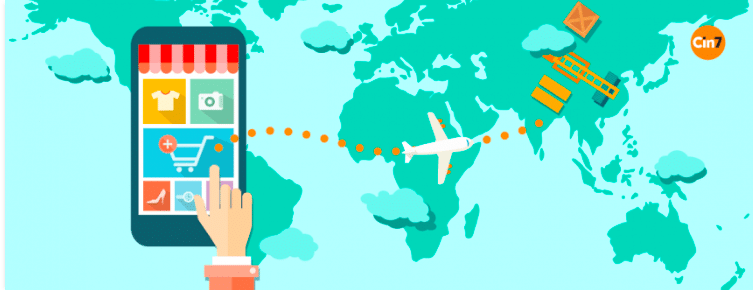Ready to sell direct to the largest consumer market in the world? Indeed the day has arrived when any business can sell directly to consumers in China via cross border e-commerce. Sounds great- more than 300 million consumers actively buying more than $250 billion dollars in foreign merchandise without special labeling or product modifications! Yes, this is true despite the deepening trade conflict between the U.S. and China. Cross border e-commerce is actually being officially expanded to more than 25 zones throughout China by decree of the Chinese Central Government. Moreover, as of January 2019 the personal duty exemption( De Minimis Rule) in China has expanded from 2500 to 5000 RMB or roughly $720 dollars per year. The time has never been better for small and large brands alike to formulate a strategy to tap into the ever growing cross border market in China and emerging spill over cross border markets in S.E. Asia.
While on boarding products to cross border e-commerce platforms is a critical first step- and detailed in a earlier post–the most fundamental issue for the larger cross border strategy is understanding the inherent costs selling through cross border e-commerce and establishing workable( attractive) selling prices. So let’s start with the basics- how does a company determine the fixed costs of cross border sales? For now, we will focus on selling through the leading cross border platforms in China- Tmall, Kaola.com and JD.com. ( For reference, Tmall and Kaola.com account for more than 55% of all cross border e-commerce sales in China)

The cost elements imbedded in the cross border e-commerce process quickly deflate a lot of brand holders. It goes without saying the more cost effectively you produce your products relative to the MSRP the more likely the brand will be profitable through cross border sales. Let’s unpack the normal “fixed costs” when selling via cross border e-commerce:
- Cost of Good Sold
- Logistics- Most companies will start by selling from a logistics point in the U.S. using air freight; it is critical to know the weight of your products, if a product weighs more than 1 kilo, a bonded warehouse in China or Asia might be a better option for managing shipment and logistics
- Packing- Don’t forget that packaging and handling are separate from freight costs
- TP- You say what the heck is a TP? A TP or Third Party assigned to set-up, build and manage your company’s online storefront( daily) is essential for and in the cross border process. Tmall, for example, requires a brand holder to pick from a select list of providers vetted and approved by their company. TP fees can range from $5,000.00 dollars per month upward past 10,000.00 dollars. The good news is a TP will not only manage the website, these companies/partners, will take on responsibility to help market( build your brand online) in China.
- Co-Op Advertising- Most likely your brand will require ongoing advertising and brand awareness building that will support the TP’s promotion efforts. The co-op advertising will depend on sales goals and is scalable as revenue grows.
- Customer Service- Chinese e-commerce platforms expect comprehensive customer support- no less than 12 hours per day.
- Returns- It is likely you can expect no less than 5% returns, possibly higher depending on your product category.
- Platform Fees- This is the commission that the e-commerce charges for each sale based on your selling price, Kaola.com has a set 10% fee, the fee structure varies on Tmall, JD, and other platforms.
- Duty- The good news when selling through the mega cross border e-commerce platforms- this fee is paid directly by the consumer( at time of purchase) to Chinese Customs. Just remember this adds to the total buying price!
- Exchange Rate- Don’t forget the volatile exchange rates may impact your selling price. In the past week, the RMB has depreciated against the dollar from 6.8 to 7!
- Amortizing fixed selling costs– Deposit to establish a pop store; Flagship Store Fees; Chinese speaking team to manage store dashboard, TP communications, and other in-country support. * Companies that partner with ABC Showcase USA avoid these costs. *
- Discounting- Oh yeah, don’t forget online shoppers are seeking bargains and the high volume sales days such as 6.18, 11.11( Singles Day), 12.12 are driven by STEEP DISCOUNTING, like 30-50%
Now that you know the true costs selling through cross border e-commerce, why not simply raise the retail price online? Regrettably, the Chinese consumers are savvy and when they see a new brand( your brand!) the first thing they are likely to do is go to Amazon and read reviews and study pricing. This being said, cross border consumers do not necessarily expect to buy 1:1 with the U.S. MSRP, but raising the retail pricing much more than 15-20%(once converted into Chinese RMB) might be problematic particularly when you are introducing the brand in China. Yet, no need to despair as there are many clever, proven techniques that exist to drive profits through cross border e-commerce.
Profit Maximizing Strategies:
- Bundling 2 or 3 units-great for beauty items, vitamins, and processed food
- Raise retail prices of less profitable items
- Consider the viability of staging inventory in Asia( HKG or Chinese Bonded Warehouse) to significantly reduce logistics fees
- Consider close out items for the big selling campaigns( 6/18, 11/11, 12/12)
- Smaller packaging- Chinese tend not to buy large, bulky food items via cross border- e.g.. a 250 ML Olive Oil more likely to sale than 500 ML
While we encourage a somber consideration of the associated costs doing cross border e-commerce in China, the fact is thousands of foreign brands are profiting selling this way. Understanding the costs and how to price your products will certainly improve the chances of your brand becoming another big winner in the cross border e-commerce market.
Learn More/ View All
Showcase USA Store
The one stop solution to launching your E-commerce brand in China


